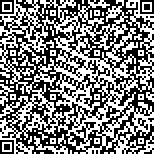| This article has been:Browse 530Times Download 948Times |

scan it! |
|
|
| DOI:10.13522/j.cnki.ggps.2024300 |
|
| Waterlogging risk assessment for wheat cultivation in the Jianghan Plain region |
|
LI Liman, LI Fen, XU Fuli, DENG Chaozhong, XIANG Qian, XIONG Qinxue
|
|
1. College of Agriculture, Yangtze University, Jingzhou 434025, China; 2. Changyang Agricultural Bureau,
Changyang 443500, China; 3. Nantong Airport Group Co., Ltd, Nantong 226000, China
|
| Abstract: |
| 【Objective】Drought and waterlogging are two major abiotic stresses that hinder crop growth worldwide. Understanding their spatiotemporal variation in a region is crucial for mitigating their detrimental impacts and safeguarding food production. This study proposes a method to assess waterlogging risk and applies it to wheat cultivation in the Jianghan Plain of Central China.【Method】The proposed assessment method is based on soil moisture and the waterlogging index (WI). Using daily soil-surface moisture data from 2000 to 2020 across the basin, we calculated the WI, considering the differences in waterlogging tolerance among wheat varieties, their growing stages, and the influence of soil temperature on the waterlogging threshold.【Result】From 2000 to 2020, the altitude of different areas in the plain was significantly negatively correlated with the average WI, with a correlation coefficient of -0.83. Precipitation in April was identified as a key factor influencing the WI. Areas with high waterlogging risk include Jingzhou District, Jianli City, Qianjiang City, Hanchuan City, Jiangling County, Xiantao City, Tianmen City, Zhijiang City, Dangyang City, and Hanyang District. Conversely, areas with low waterlogging risk include Zhongxiang City, Shayang County, Jingshan City, Jingmen City, and Yingcheng City. The critical threshold for wheat waterlogging in the plain was found to be WI = 10.97.【Conclusion】The method developed for assessing waterlogging risk offers an improvement over existing approaches. Its application to wheat production in the Jianghan Plain, with a spatial resolution of 1 km2, can assist in the development of effective mitigation strategies to safeguard wheat production in various areas of the plain. |
| Key words: waterlogging index; wheat waterlogging; meteorological yield; Jianghan Plain; waterlogging risk assessment |
|
|